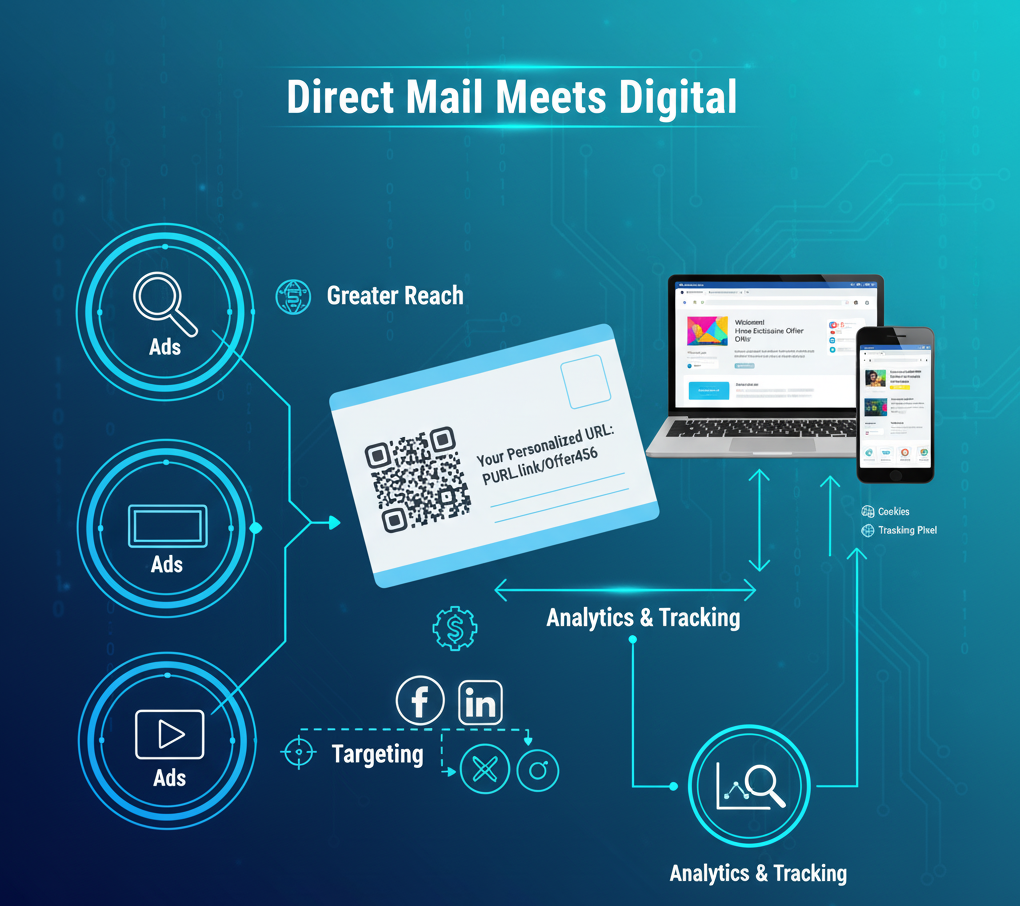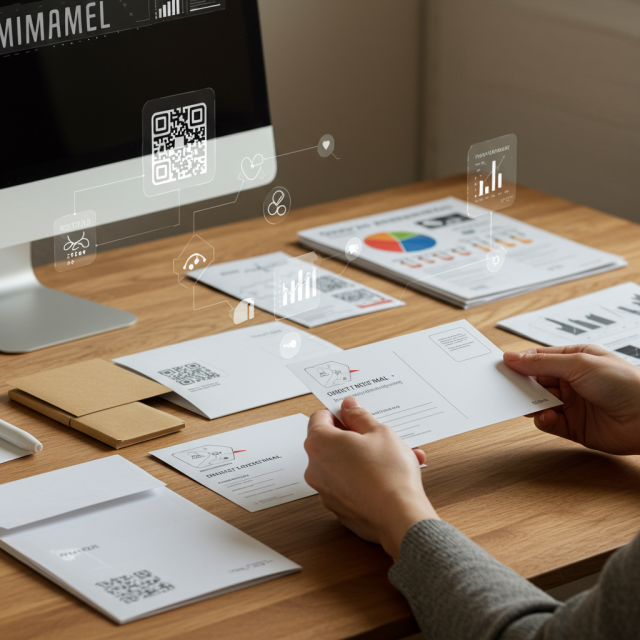In an era dominated by digital ads and social media campaigns, many marketers overlook the power of direct mail. Yet this classic channel continues to yield impressive response rates, foster meaningful connections, and drive revenue when executed intelligently. In this comprehensive guide, we’ll explore why direct mail remains relevant, how to integrate it seamlessly with your online efforts, and best practices for maximizing your return on investment.
1. Why Direct Mail Still Works
Despite the proliferation of inbox clutter and ad blockers, physical mail offers a tangible experience that commands attention. According to recent industry studies, recipients spend an average of 30 seconds reviewing each mail piece—far longer than a typical banner ad exposure. The tactile nature of envelopes, high-quality paper, and personalized design elements activates multiple senses, increasing the likelihood of memorability and action.
Moreover, direct mail provides a level of trust that digital channels sometimes struggle to achieve. Consumers often perceive mailed communications as more official and credible—especially when they arrive in professionally printed formats. By investing in direct mail, your brand can stand out in a crowded marketplace and build a deeper emotional connection with your audience.
2. Integrating Direct Mail with Digital Channels

One of the greatest strengths of modern direct mail campaigns lies in their ability to bridge offline and online worlds. By incorporating personalized URLs (PURLs), QR codes, and campaign-specific landing pages, you can track responses, collect data, and nurture leads more effectively. Here’s how to weave these elements together:
- PURLs and Microsites: Assign each recipient a unique URL printed on their mail piece. When they visit, you capture behavioral data and can deliver fully personalized content based on their profile.
- QR Codes: A well-placed QR code bridges physical and digital. Whether it directs to a video demo or an exclusive discount page, ease of scanning encourages immediate engagement.
- Social Media Retargeting: Append UTM parameters to your PURLs so you can follow up with targeted ads on Facebook, Instagram, or LinkedIn, reinforcing the mailer’s message online.
By unifying your measurement systems, you’ll quickly see which creative treatments and offers drive the highest multi-touch conversion rates.
3. Targeting and Personalization in Direct Mail
Effective direct mail begins with data. The more you know about your audience, the more relevant and compelling your mail piece will be. Start by segmenting your list based on demographics, purchase history, website behavior, and geographic insights. Then apply personalization at scale:
- Variable Data Printing: Swap out headlines, imagery, and copy blocks dynamically so each recipient sees a version of the piece that resonates with their specific needs.
- Personalized Offers: Tailor incentives according to past purchase amounts or loyalty status—higher-value customers might receive exclusive VIP event invites, while prospects get introductory discounts.
- Localized Content: Reference recipients’ city, region, or local weather to make the piece feel more immediate and relevant.
When done well, personalization can lift response rates by 50% or more, significantly amplifying your ROI.
4. Designing Effective Mail Pieces

Creative design is the hook that pulls recipients into your message. High-impact mailers balance aesthetics with clear calls to action. Follow these best practices:
- Clear Hierarchy: Use bold headlines, subheads, and bullet points so busy readers can scan quickly.
- Strong Visuals: Incorporate high-resolution photos or custom illustrations that reinforce your main selling points.
- Compelling Copy: Open with an emotional trigger or benefit statement, then follow with concise details and a clear next step.
- Unambiguous Call to Action: Whether it’s “Visit your personalized website” or “Scan this QR code to unlock 20% off,” clarity drives action.
- Quality Materials: Upgrade paper stock, consider textured coatings, or utilize fold-outs and dimensional mailers for maximum impact.
Remember, the design should amplify—not overshadow—your offer and message.
5. Measuring Success and ROI
Tracking offline campaigns requires thoughtful planning. Before you drop your mail pieces, ensure every element is traceable. Assign unique codes or URLs to each variant so you can quantify:
- Response Rate: Percentage of recipients who take your desired action.
- Conversion Rate: Proportion of responders who complete a purchase or sign up.
- Cost per Acquisition (CPA): Total campaign cost divided by the number of new customers acquired.
- Lifetime Value (LTV): Projected revenue each new customer will generate over time.
By comparing CPA against LTV, you can determine your true ROI and justify investment in future mail drops or scale successful campaigns.
6. Case Study: Local Boutique Success
A regional fashion boutique recently launched a holiday-themed direct mail campaign targeting high-value loyalty members. They segmented 5,000 customers by past purchase frequency, personalized each piece with a QR code linking to a custom gift guide, and offered in-store VIP shopping appointments. The results:
- Response Rate: 12% (industry average is 4–6%)
- Average Order Value: 35% higher than store baseline
- ROI: 480% after two weeks
This success story illustrates how precision targeting, personalization, and seamless integration with an in-store experience can supercharge results.
7. Best Practices and Tips
To ensure your direct mail program thrives over the long term, keep these guidelines in mind:
- Test and Learn: Run A/B tests on offers, mail formats, and creative to continually optimize performance.
- Maintain List Hygiene: Regularly update your mailing list to remove inactive addresses and reduce waste.
- Leverage Timing: Send mailers during peak planning seasons for your industry—retailers before major holidays, B2B companies ahead of Q4 budgets.
- Align with Campaign Themes: Sync direct mail with broader marketing initiatives (online ads, email blasts, events) for a cohesive brand story.
- Monitor Compliance: Adhere to postal regulations and data privacy laws to avoid fines and protect brand reputation.
Consistency and attention to detail are keys to scaling successful mail programs.
8. The Future of Direct Mail in Traditional Marketing
As digital fatigue grows, savvy brands are rediscovering the value of offline channels. Traditional Marketing techniques, when combined with emerging technologies like augmented reality (AR) triggers in print, enhanced personalization through artificial intelligence, and eco-friendly packaging innovations, will shape the next wave of direct mail. By staying ahead of trends and blending them with proven fundamentals, you can craft campaigns that surprise, delight, and convert at scale.
Conclusion
Direct mail is far from obsolete—it’s evolving. When you combine precise targeting, creative design, and seamless integration with digital touchpoints, you create a powerful avenue for engagement and ROI. Whether you’re a small local business or a national brand, a well-executed direct mail strategy can complement your digital efforts and drive meaningful growth. Start testing today, and watch your offline investments deliver measurable results in the digital age.
Learn more about: Advertising Planning & Market Theories: How Frameworks Drive Real‑World Campaign Success









